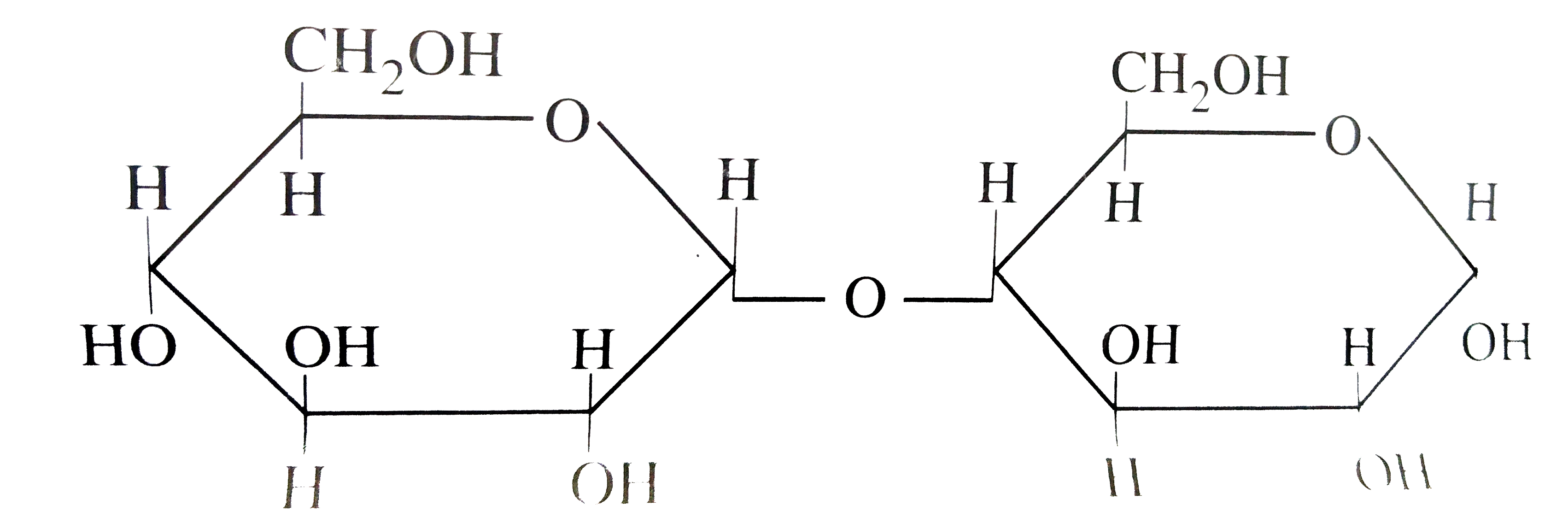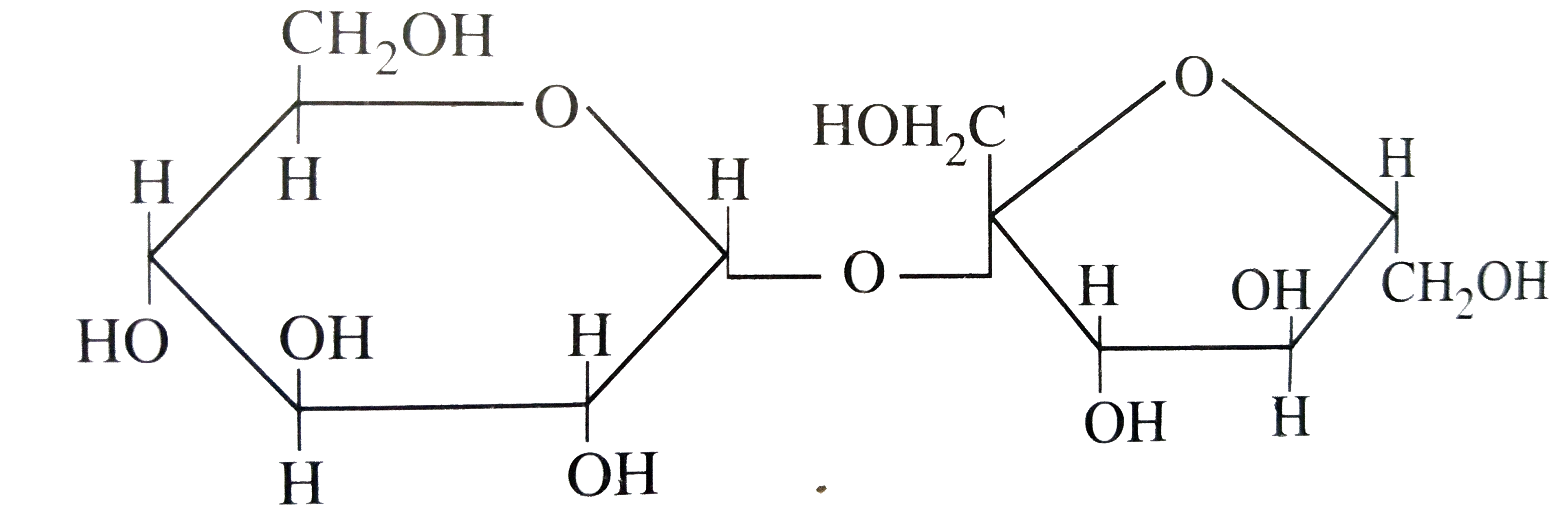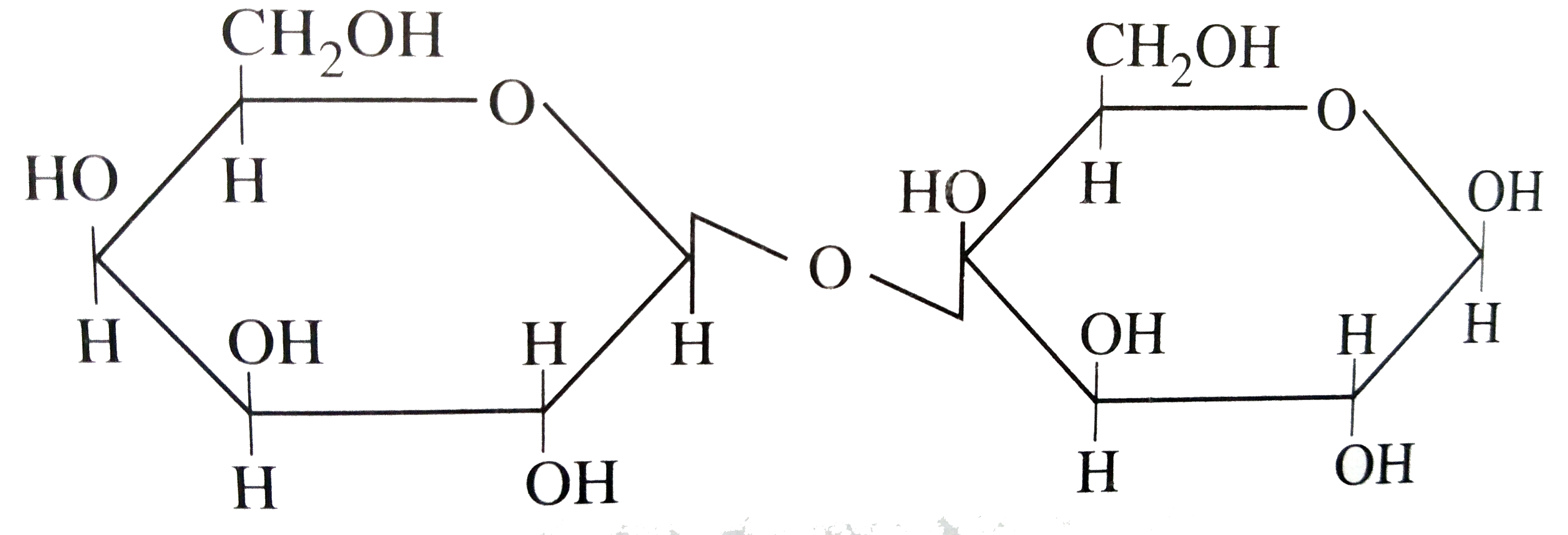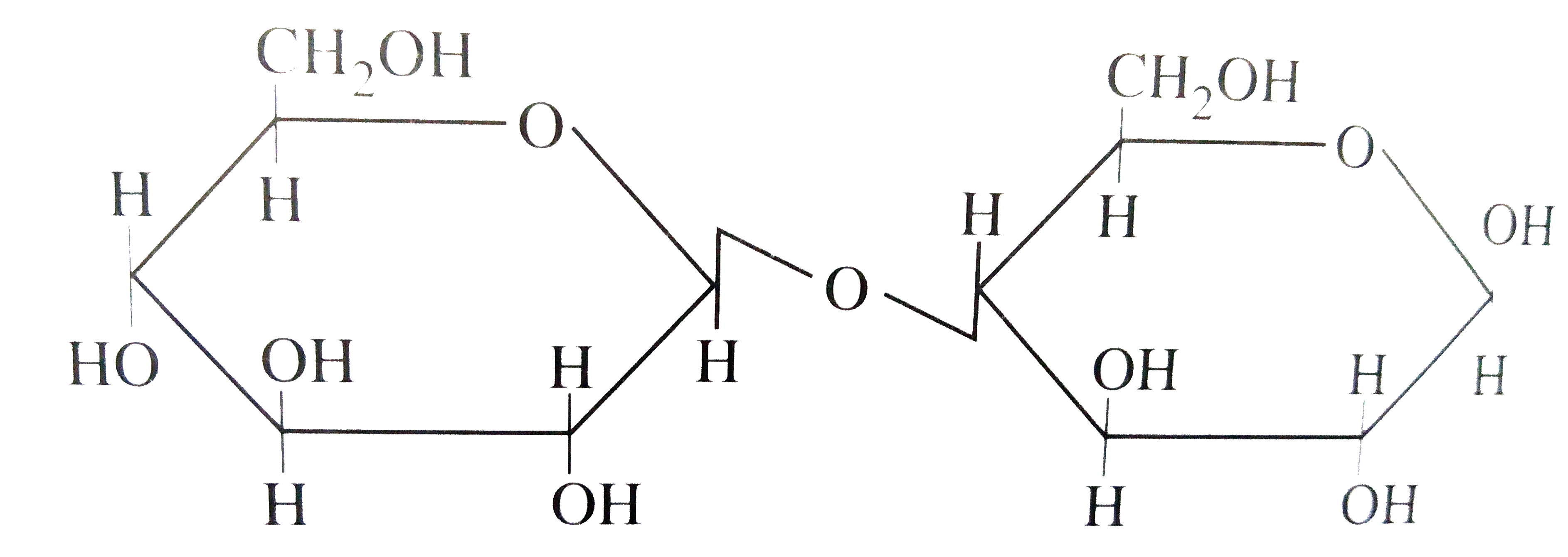Which of the following is reducing and non-reactive sugar ?
Galactose
Gluconic acid
Methygalactoside
Sucrose
The correct Answer is:D
To determine which of the following options is a reducing and non-reactive sugar, we need to analyze each option based on their chemical structure and properties.
Step 1: Understand the definitions
- Reducing sugars are those that have a free aldehyde or ketone group, allowing them to be easily oxidized by mild oxidizing agents.
- Non-reactive sugars are those that do not participate in certain reactions, such as the Benedict's test, which is used to identify reducing sugars.
Step 2: Analyze the options
1. Galactose:
- It is a monosaccharide (C6H12O6) and has a free aldehyde group. Therefore, it is a reducing sugar. However, it shows no response in the Benedict's test, making it non-reactive in this context.
2. Gluconic acid:
- This is a derivative of glucose and contains a carboxylic acid group. It is also a reducing sugar but reacts in the Benedict's test.
3. Methyl galactoside:
- This is a glycoside and does not have a free aldehyde or ketone group, making it a non-reducing sugar. However, it is not classified as non-reactive in the context of the question.
4. Sucrose:
- This is a disaccharide composed of glucose and fructose. It does not have a free aldehyde or ketone group, making it a non-reducing sugar. It reacts positively in the Benedict's test.
Step 3: Conclusion
- Among the options provided, Galactose is the only sugar that is both reducing (due to its free aldehyde group) and non-reactive (as it does not show a response in the Benedict's test).
Final Answer: Galactose
---
- Reducing sugars are those that have a free aldehyde or ketone group, allowing them to be easily oxidized by mild oxidizing agents.
- Non-reactive sugars are those that do not participate in certain reactions, such as the Benedict's test, which is used to identify reducing sugars.
1. Galactose:
- It is a monosaccharide (C6H12O6) and has a free aldehyde group. Therefore, it is a reducing sugar. However, it shows no response in the Benedict's test, making it non-reactive in this context.
2. Gluconic acid:
- This is a derivative of glucose and contains a carboxylic acid group. It is also a reducing sugar but reacts in the Benedict's test.
3. Methyl galactoside:
- This is a glycoside and does not have a free aldehyde or ketone group, making it a non-reducing sugar. However, it is not classified as non-reactive in the context of the question.
4. Sucrose:
- This is a disaccharide composed of glucose and fructose. It does not have a free aldehyde or ketone group, making it a non-reducing sugar. It reacts positively in the Benedict's test.
- Among the options provided, Galactose is the only sugar that is both reducing (due to its free aldehyde group) and non-reactive (as it does not show a response in the Benedict's test).
Similar Questions
Knowledge Check
Which of the following is non-reducing sugar ?
AGlucoseBSucroseCMaltoseDLactoseWhich one of the following is a reducing sugar?
AA) MaltoseBB) CelluloseCC) GlucoseDD) SucroseIn disaccharides, if the reducing groups of monosaccharides, i.e., aldehydic or ketonic groups are bonded, these are non-reducing sugars. Which of the following disaccharide is a non-reducing sugar?
A B
B C
C D
D
In disaccharides, if the reducing groups of monosaccharides, i.e., aldehydic or ketonic groups are bonded, these are non-reducing sugars. Which of the following disaccharide is a non-reducing sugar?
View SolutionWhich of the following is relatively least reactive?
View SolutionWhich of the following is most reactive ?
View SolutionWhich of the following are non-reducing sugars -

View SolutionWhich of the following is/are non-reducing sugars?
View Solution
